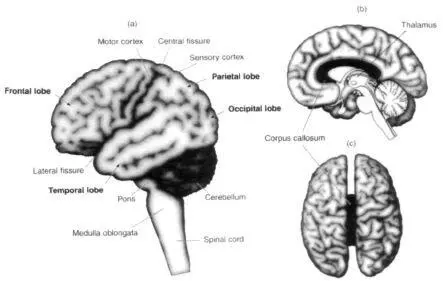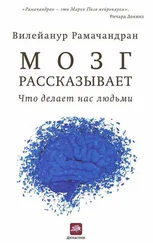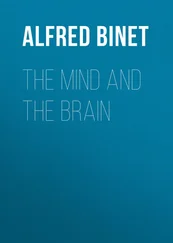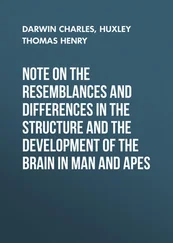The seizures were alarming, of course, but to his amazement and delight he found himself becoming fascinated by poetry, for the first time in his life. In fact, he began thinking in verse, producing a voluminous outflow of rhyme. He said that such a poetic view gave him a new lease on life, a fresh start just when he was starting to feel a bit jaded. Does it follow from this example that all of us are unfulfilled poets, as many new age gurus and mystics assert? Do we each have an untapped potential for beautiful verse and rhyme hidden in the recesses of our right hemisphere? If so, is there any way we can unleash this latent ability, short of having seizures?
•
Before we meet the patients, crack mysteries and speculate about brain organization, I’d like to take you on a short guided tour of the human brain. These anatomical signposts, which I promise to keep simple, will help you understand the many new explanations for why neurological patients act the way they do.
It’s almost a cliché these days to say that the human brain is the most complexly organized form of matter in the universe, and there is actually some truth to this. If you snip away a section of brain, say, from the convoluted outer layer called the neocortex and peer at it under a microscope, you’ll see that it is composed of neurons or nerve cells — the basic functional units of the nervous system, where information is exchanged. At birth, the typical brain probably contains over one hundred billion neurons, whose number slowly diminishes with age.

Figure 1.1
Each neuron has a cell body and tens of thousands of tiny branches called dendrites, which receive information from other neurons. Each neuron also has a primary axon (a projection that can travel long distances in the brain) for sending data out of the cell, and axon terminals for communication with other cells.
If you look at Figure 1.1, you’ll notice that neurons make contacts with other neurons, at points called synapses. Each neuron makes anywhere from a thousand to ten thousand synapses with other neurons. These can be either on or off, excitatory or inhibitory. That is, some synapses turn on the juice to fire things up, whereas others release juices that calm everything down, in an ongoing dance of staggering complexity. A piece of your brain the size of a grain of sand would contain one hundred thousand neurons, two million axons and one billion synapses, all “talking to” each other. Given these figures, it’s been calculated that the number of possible brain states — the number of permutations and combinations of activity that are theoretically possible — exceeds the number of elementary particles in the universe. Given this complexity, how do we begin to understand the functions of the brain? Obviously, understanding the structure of the nervous system is vital to understanding its functions 5 — and so I will begin with a brief survey of the anatomy of the brain, which, for our purposes here, begins at the top of the spinal cord. This region, called the medulla oblongata, connects the spinal cord to the brain and contains clusters of cells or nuclei that control critical functions like blood pressure, heart rate and breathing. The medulla connects to the pons (a kind of bulge), which sends fibers into the cerebellum, a fist-sized structure at the back of the brain that helps you carry out coordinated movements. Atop these are the two enormous cerebral hemispheres — the famous walnut-shaped halves of the brain. Each half is divided into four lobes — frontal, temporal, parietal and occipital — that you will learn much more about in coming chapters (Figure 1.2).

Figure 1.2 Gross anatomy of the human brain, (a) Shows the left side of the left hemisphere. Notice the four lobes: frontal, parietal, temporal and occipital. The frontal is separated from the parietal by the central or rolandic sulcus (furrow or fissure), and the temporal from the parietal by the lateral or sylvian fissure, (b) Shows the inner surface of the left hemisphere. Notice the conspicuous corpus callosum (black) and the thalamus (white) in the middle. The corpus callosum bridges the two hemispheres, (c) Shows the two hemispheres of the brain viewed down the top . (a) Ramachandran; (b) and (c) redrawn from Zeki, 1993.
Each hemisphere controls the movements of the muscles (for example, those in your arm and leg) on the opposite side of your body. Your right brain makes your left arm wave and your left brain allows your right leg to kick a ball. The two halves of the brain are connected by a band of fibers called the corpus callosum. When this band is cut, the two sides can no longer communicate; the result is a syndrome that offers insight into the role each side plays in cognition. The outer part of each hemisphere is composed of cerebral cortex: a thin, convoluted sheet of cells, six layers thick, that is scrunched into ridges and furrows like a cauliflower and packed densely inside the skull.
Right in the center of the brain is the thalamus. It is thought to be evolutionarily more primitive than the cerebral cortex and is often described as a “relay station” because all sensory information except smell passes through it before reaching the outer cortical mantle. Interposed between the thalamus and the cortex are more nuclei, called basal ganglia (with names like the putamen and caudate nucleus). Finally, on the floor of the thalamus is the hypothalamus, which seems to be concerned with regulating metabolic functions, hormone production, and various basic drives such as aggression, fear, and sexuality.
These anatomical facts have been known for a long time, but we still have no clear idea of how the brain works. 6 Many older theories fall into two warring camps — modularity and holism — and the pendulum has swung back and forth between these two extreme points of view for the last three hundred years. At one end of the spectrum are modularists, who believe that different parts of the brain are highly specialized for mental capacities. Thus there is a module for language, one for memory, one for math ability, one for face recognition and maybe even one for detecting people who cheat. Moreover, they argue, these modules or regions are largely autonomous. Each does its own job, set of computations, or whatever, and then — like a bucket brigade — passes its output to the next module in line, not “talking” much to other regions.
At the other end of the spectrum we have “holism”, a theoretical approach that overlaps with what these days is called “connectionism”. This school of thought argues that the brain functions as a whole and that any one part is as good as any other part. The holistic view is defended by th fact that many areas, especially cortical regions, can be recruited for multiple tasks. Everything is connected to everything else, say the holists, and so the search for distinct modules is a waste of time.
My own work with patients suggests that these two points of view are not mutually exclusive — that the brain is a dynamic structure that employs both “modes” in a marvelously complex interplay. The grandeur of the human potential is visible only when we take all the possibilities into account, resisting the temptation to fall into polarized camps or to ask whether a given function is localized or not localized. 7 As we shall see, it’s much more useful to tackle each problem as it comes along and not get hung up taking sides.
Читать дальше














